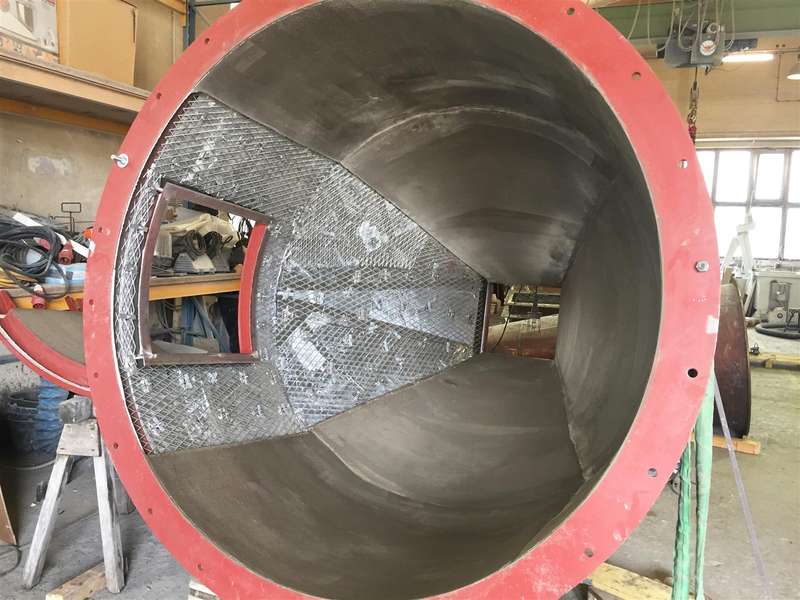An enquiry about one part of the system came from long-standing regular customer of Kalenborn with an arc furnace. The initial dust collector in the system filters dust out of the air. Since some of the materials are quite coarse-grained, the equipment is subject to serious wear. Due to continuous temperature fluctuation between ambient temperatures and 750°C, another damaging aspect is the unequal expansion of the steel shell and its lining. These leads to cracks and rupturing of the lining and metal fatigues in the steel. Until now the dust collector has been protected by high-grade steel and a 150-mm thickness of refractory compound. The solution nevertheless proved unsatisfactory, since it only lasted for less than a year in service. For this reason, the customer was seeking improved wear protection that would stay in service for a period of at least two years.
For this complex piece of plant, the engineers from Kalenborn designed a very special solution: The dust collector was to be lined with a multi-layer system. The hard ceramic compound KALCRET, with its ability to withstand extremes of temperature, was used for this. It was applied to the steel shell on top of a heat-insulating plate which had been manufactured at Kalenborn. Installation of the insulation and the KALCRET lining was handled by Kalenborn as well.
This system offered several benefits: The insulating layer would prevent the steel experiencing the highest temperatures. This meant that the shell would not endure so much expansion as a result of temperature fluctuations. This prevents deposits of soot and rupturing of the lining. It also meant that a cheaper steel could be used for the shell. This innovative approach from Kalenborn is economical and has increased availability of the equipment considerably.
